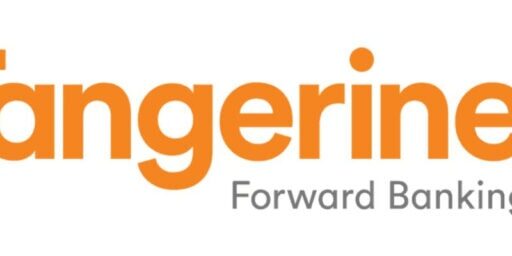RESP Portfolio Update – December 2012
It’s been a couple of years since my last RESP portfolio update and probably would have been longer if it wasn’t for a reader request for a quick update. Since the last update, there has been a big change. Instead of managing one RESP, now there are two! We have the RESP accounts setup separately, but under a family plan.
The RESP portfolios for our children are setup with TD e-Series mutual funds which provide a low cost way to index the market. I chose to go with mutual funds instead of ETFs as I like the freedom of adding small amounts at a time without having to pay a commission for every purchase.
The long term plan for the RESPs is to be aggressive for the first 10 years (90% equities 10% bonds) with increasing fixed income as the University tuition nears. I copied the table from my RESP strategy article below.
Index 0-10yrs 10-14yrs 14-17yrs 18yrs + Canadian Equity 30% 20% 10% 0% US Equity 30% 20% 10% 0% International Equity 30% 20% 10% 0% Canadian Bonds 10% 40% 35% 0% GIC’s 0% 0% 35+% 75% Money Market Fund 0% 0% 0% 25%
Portfolio totals as of December 7, 2012
First RESP Portfolio (started 2nd quarter 2008):
| Investments | Units Held |
Price Per Unit |
Market Value |
% Holdings |
Book Value |
| TD CDN Money Mkt | 250.271 | $10.00 | $2,502.71 | 15.23 | $2,502.71 |
| TD CDN Index-e** | 199.392 | $19.92 | $3,971.89 | 24.180 | $4,053.94 |
| TD US Index-e** | 149.446 | $24.76 | $3,700.28 | 22.520 | $3,076.98 |
| TD CDN Bond Index-e** | 205.104 | $11.67 | $2,393.56 | 14.570 | $2,339.82 |
| TD Int’l Index-e** | 449.390 | $8.59 | $3860.26 | 23.500 | $3,647.16 |
| Total as of Dec 7, 2012 | $16,428.70 | $15,620.61 | |||
Second RESP Portfolio (started 3rd quarter 2011):
| Investments | Units Held |
Price Per Unit |
Market Value |
% Holdings |
Book Value |
| TD CDN Money Mkt | 150.932 | $10.00 | $1,509.32 | 23.780 | $1,509.32 |
| TD CDN Index-e** | 78.626 | $19.92 | $1,566.23 | 24.680 | $1,519.57 |
| TD US Index-e** | 45.955 | $24.76 | $1,137.85 | 17.930 | $1,007.70 |
| TD CDN Bond Index-e** | 0 | 0 | 0 | 0 | 0 |
| TD Int’l Index-e** | 248.341 | $8.59 | $2,133.25 | 33.610 | $2,045.02 |
| Total as of Dec 7, 2012 | $6,346.65 | $6,081.61 | |||
We started the first portfolio in early 2008 near the peak of the market so there was a point in early 2009 where the market value of this portfolio was significantly below book value. It’s comforting to see that rebalancing with new money every year has brought positive results. This portfolio is up about 5.2% since inception (not including annual Canadian Education Savings Grant).
The second RESP portfolio was started near mid 2011, which fortunately, was during a market correction. You may notice that this account does not have any bonds. The reason being is that bonds have been fairly expensive over the past year or so, but I will be adding some when the time is right. This account has returned 4.4% thus far (not including annual Canadian Education Savings Grant).
Going forward, I hope to deploy some of the cash as opportunities arise. The cash portion of the portfolios are already relatively high with another cash contribution coming in the new year.
If you have setup an RESP, who is your provider? What is your investment strategy?
I've Completed My Million Dollar Journey. Let Me Guide You Through Yours!
Sign up below to get a copy of our free eBook: Can I Retire Yet?











Are the dividend-paying international and us index funds in your current resp portfolio subject to non-resident withholding taxes or does this rule only apply to stocks?
@Marjan, sorry I missed this comment. The ratio of stocks/bonds is more of a risk/reward choice and is not mandatory. In other words, I could leave the 90/10 equity/bond allocation for the whole duration if I wanted.
Hi There,
I have a question, lets say something happens to you or you forget to shift the asset allocations after the 10 year mark and you leave it as you initally started 90% equity 10% bonds, what will happen?
It is invested in following funds:
AGF Canadian Large Cap Dividend Fund
AGF Emerging Markets Fund
What is your opinion or do you know any better options ?
Agf has some okay funds. First a couple of questions. What is it invested in now? How old is your child/ren? How much are you currently contributing? How risky do you like your investments? With your current advisor are you able to start putting your new money into another firms funds? Sounds like you are not satisfied with your current advisor, have you considered switching? I know it is a fair number of questions…
I have RESP with AGF.com but in last 5 yrs. i didn’t earn anything. I can’t xfer to other institute for another 2 yrs because those are backend funds. Can anybody suggest which one of AGF’s funds are good to invest ?
Thanks,
bobby
Hey guys, I’m not really interested in moving the $2,600 to another institution but I’ll investigate other investment options on the TD side. In the meantime, I’ve got everything else set up at Waterhouse (RESP, RRSP, TFSA) and I’m happy with the e-series funds for my RESP contributions
Hi Echo,
If you read the letter from TD, it says that TD Canada Trust applies for all the grants, but TD Waterhouse does not. The choice of investment is irrelevant.
You can move your GIC to an investment with more growth at TD Canada Trust or one of many other investment firms. Just call them first to make sure they apply for all the grant programs. If they do, then you should be able to keep all the grants.
Note that your TD Waterhouse RESP will only get the CESG and not the other grants for any contributions you make there.
Ed
I used to work for Td and this is a Td policy, not a government policy. There are many other investment firms such as Mackenzie that invest the additional grant, regular grant and the bond. It would be worth looking into other places to invest that money as you can easily double the money invested over 14 years.
Are you with Td Waterhouse or do you invest in the e series via the bank side?
Long story short, I’ve got a GIC with TD that has about $2,600 worth of contributions and grants (CESG, ACES). I wanted to transfer this to Waterhouse to invest in their e-series funds. I was told that if I collapse the GIC and transfer it to Waterhouse that I would lose the ACES grant money.
So I left that money in the GIC and opened up a new RESP with Waterhouse where I now make all my contributions and invest in e-series funds.
With the GIC intact on the TD side I’ll get to keep the $500 ACES grant for each child, plus another $100 each when they turn 8, 11 and 14.
I don’t know how much of a pain this will be when it comes time to withdraw the funds, but that’s at least 15 years away.